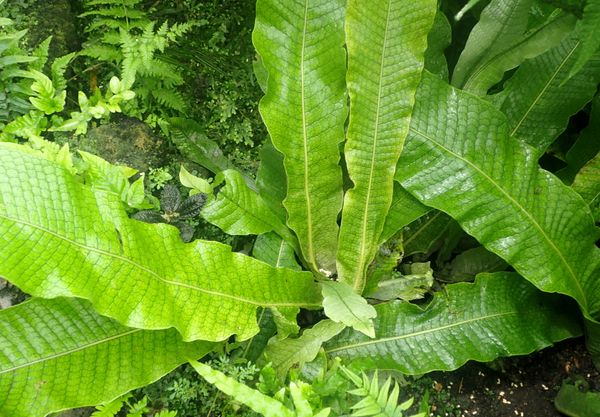Crocodile Fern Care Guide
How to grow and care for Crocodile Fern (Microsorum musifolium)
The Microsorum musifolium, commonly known as the Crocodile Fern, is a unique and eye-catching fern species that is cherished for its distinctive, leathery leaves with a crocodile-skin texture. Originating from the tropical regions of Asia and Australia, this plant adds an exotic touch to indoor spaces and thrives in relatively low-maintenance conditions. If you're looking to add a bit of the wild to your home decor, the Crocodile Fern could be the perfect choice for you.

Disclosure: This content includes affiliate links, which means we may earn a commission if you click on a link and make a purchase. As an Amazon Associate, we earn from qualifying purchases. This comes at no extra cost to you and helps offset the cost of running Leafwise. Please read our disclaimer for more info.
Table of Contents
Care
Light
Provide bright, indirect sunlight. Too much direct sun can scorch the leaves, while too little can lead to slow growth. Ideal placement includes east- or west-facing windows with filtered light to mimic the plant’s natural tropical understory environment.
Watering
Keep the soil consistently moist but not soggy. Water when the top inch of soil feels dry, using lukewarm water to avoid shocking the roots. Reduce watering during the winter months when growth slows.
Humidity
Crocodile Ferns thrive in high humidity. Aim for 60% or higher. Consider using a humidifier, pebble tray, or grouping with other tropical plants. While misting helps temporarily, it may not significantly raise humidity on its own.
Temperature
Maintain a warm environment ranging between 60–75°F (16–24°C). Avoid placing the fern near drafty areas, air conditioners, or heaters. Do not expose the plant to temperatures below 50°F (10°C), as cold exposure can cause damage.
Soil
Use a well-draining potting mix, preferably one enriched with peat and organic matter. To improve drainage and aeration, consider incorporating orchid bark or perlite. This combination retains moisture without causing waterlogging.
Maintenance
Pruning
Trim any dead or damaged fronds to encourage new growth and maintain a tidy appearance.
Fertilizing
Fertilize every 4–6 weeks during the growing season (spring and summer) with a balanced, water-soluble fertilizer diluted to half strength. Watch for signs of over-fertilization, such as browning leaf tips or salt buildup on the soil surface. Avoid fertilizing during fall and winter to prevent salt buildup and nutrient stress.
Repotting
Repot every 1–2 years or when the plant becomes root-bound. Crocodile Ferns have shallow root systems and generally do not require frequent repotting. Choose a slightly larger pot with good drainage to accommodate growth.
Propagation
Division
Propagation is best done in spring or early summer during repotting through division. Newly divided plants may take time to adjust, so monitor them closely for signs of transplant shock:
- Gently remove the plant from its pot and shake off excess soil.
- Identify natural divisions within the clump of fronds and rhizomes.
- Use a sharp, sterile knife to divide the rhizomes.
- Plant each division in its own pot and care for it as you would a mature plant.
Common Issues
Pests
- Cause: Dry air, dusty foliage, or nearby infested plants.
- Symptoms: Presence of spider mites or scale insects; visible webbing, speckled leaves, or hard bumps.
- Solution: Wipe leaves with a damp cloth and treat infestations using insecticidal soap or neem oil. Inspect regularly to catch issues early.
Root Rot
- Cause: Overwatering and poor drainage can lead to root rot.
- Symptoms: Yellowing fronds, a foul smell from the soil, or mushy, darkened roots.
- Solution: Let the soil dry out, trim affected roots, and repot using fresh, well-draining soil. Ensure your pot has proper drainage holes and adjust your watering routine accordingly. can lead to root rot.
Yellowing Leaves
Cause: Insufficient humidity, poor lighting, irregular watering, or early signs of root rot.
Symptoms: Fronds may turn yellow, fade in color, or lose vibrancy.
Solution: Improve humidity levels, move the plant to a spot with brighter indirect light, check for overly wet soil or mushy roots, and maintain a consistent watering schedule., poor lighting, or irregular watering.
With steady care and a suitable indoor environment, your Crocodile Fern can become a captivating feature in your home, known for its unique foliage and tropical charm. To keep it thriving, focus on maintaining high humidity, providing indirect light, and keeping the soil consistently moist without overwatering.
